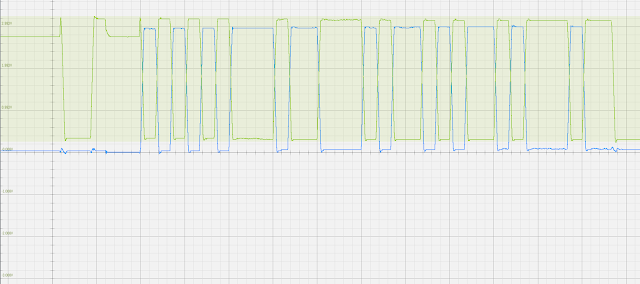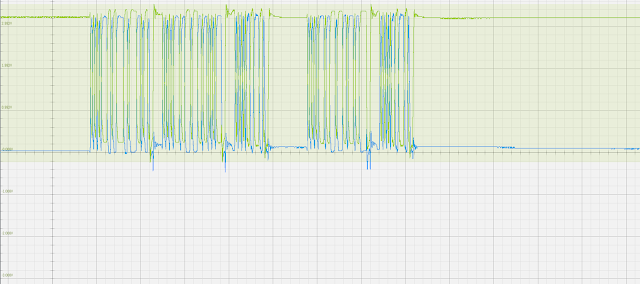Gherkin Express2 with SMT assembly at JLCPCB
I wanted to try out the SMT assembly service at JLCPCB. They were having a
special with a $8 discount coupon.
The first thing to realize with this service is that there are a lot of
restrictions:
- Green solder mask only
- 1mm, 1.2mm, 1.6mm thick PCB only
- Assemble one side only. You choose top side or bottom when ordering. Put all your SMT parts on one side if possible.
- 1oz copper (the usual)
- 100x100mm max size for the promotional discount, otherwise 480x320mm max size.
- You need tooling holes added to your PCB. You can add them yourself or let them do it.
-
2, 5 or 10 pieces assembled, no other options. You either get 2 assembled or
all 5, or 10 of your PCB order. If you only get 2 assembled the remainder of
the blank PCBs are returned with your order
- You do not get the solder stencil with your order
-
Only parts in stock in the
JLCPCB inventory are
available for assembly. Any other parts even if LCSC has them will be
skipped.
-
Extended non-BASIC parts have a $3 setup fee.
Since I could not do a 0.6mm thick PCB like the Gherkin Express I redesigned it to
have a regular micro USB connector. JLCPCB does not have any USB connectors in
inventory so this is an item that will have to be soldered on manually.
The 5.1mm tactile switches were in their inventory but as an Extended item, so
there is a one time $3 charge to use them.
They were also out of stock on the ATmega32U2, but they do have the ATmega328p
and it is a BASIC part, so no setup fee. I redesign the Gherkin Express 2 as a
V-USB board.
The rest of the items needed I found the BASIC equivalent to save on setup
fees. The only items I could not find a BASIC part for were the fuse and the
3.6v zener. I have zener diodes so I left those out but included the Extended
fuse part.
$6 total for setup of the tactile switches and the fuse Extended parts.
Designing the PCB using EasyEDA and selecting all the parts through their
library makes it easy to export the BOM and pick-and-place file that JLCPCB
needs for assembly. It is also in the format they accept so no editing is needed. Just
export from the fabrication menu in EasyEDA, save to a file and import to
JLCPCB.
The preview in JLCPCB shows the placement and orientation of all the parts. The
USB connector and the 2 zener diodes are not populated and will not be
assembled.You can see the 3 tooling holes in the corners.
This is what was received. Everything as expected. Only the USB connector and
zener diodes to be added.
Remaining parts soldered on.
I tried 3 different USB connectors. The one on the left is the incorrect part for this footprint. It does line up enough to work. The middle one is the correct part, it has reinforcing flanges on the front of the connector. The one on the right is the version of the connector without flanges, makes it a little lower profile.
Edge view of the 3 different connectors. Also 2 of the original Gherkin Express above. The highest part of the board are the switches.
5 keyboards in an Altoids tin.
A few more could fit.
Since these have an ATmega328p there is no bootloader. I made a pogo pin jig to connect to the ISP pads. Once flashed with the USBasploader it can be flashed via USB as a USBasp device. The reset and usbasp switches work the same as on the aardvark. It uses the same bootloader as the aardvark.
The total cost for 5 assembled boards with all the parts included was $32.32, this is with the $8 coupon applied. Add to that the cost of the PCB $5 and shipping. If you order other PCBs at the same time they will wait the 1-2 days for SMT assembly and all ship together.

































